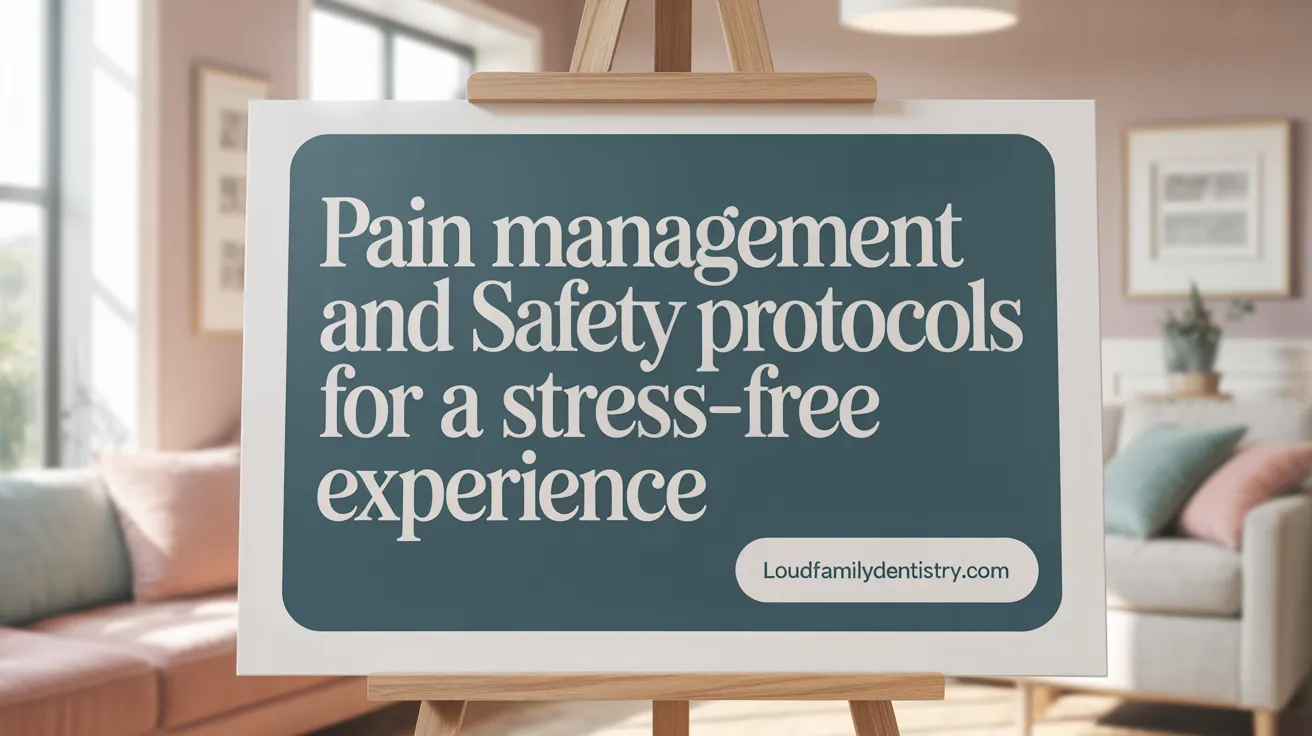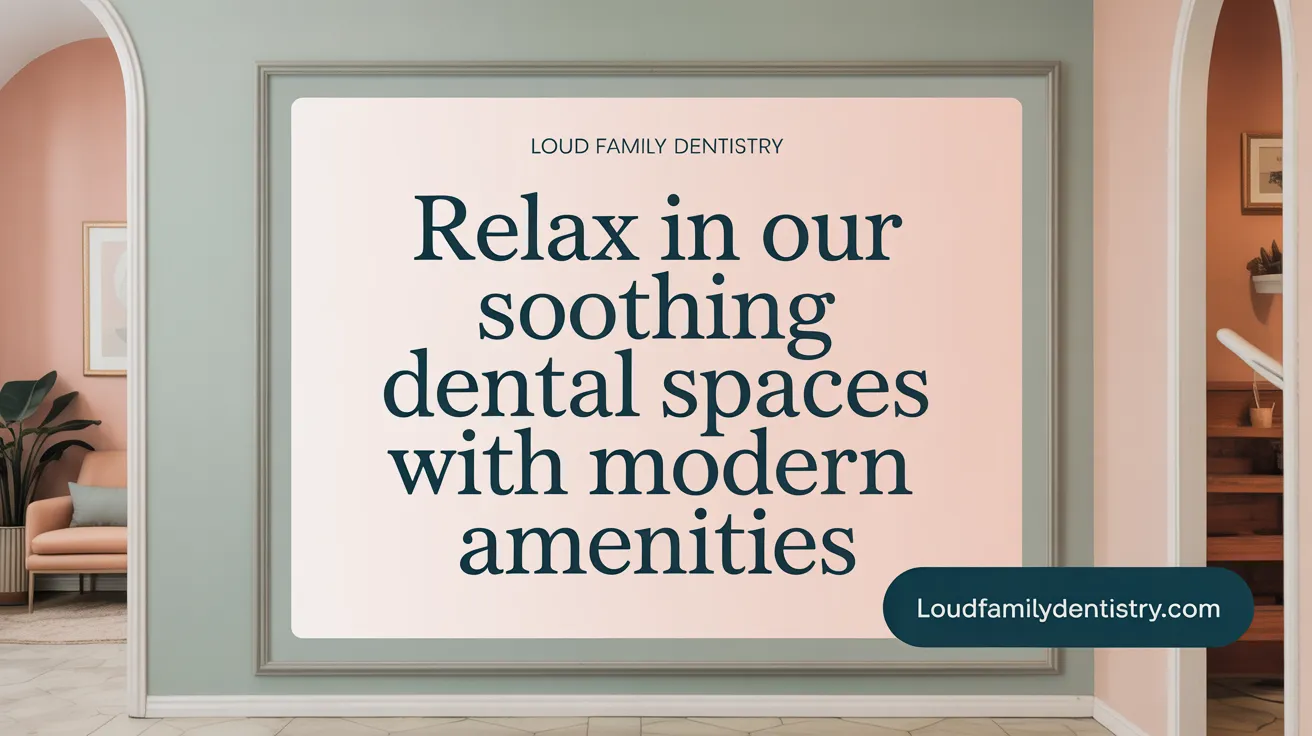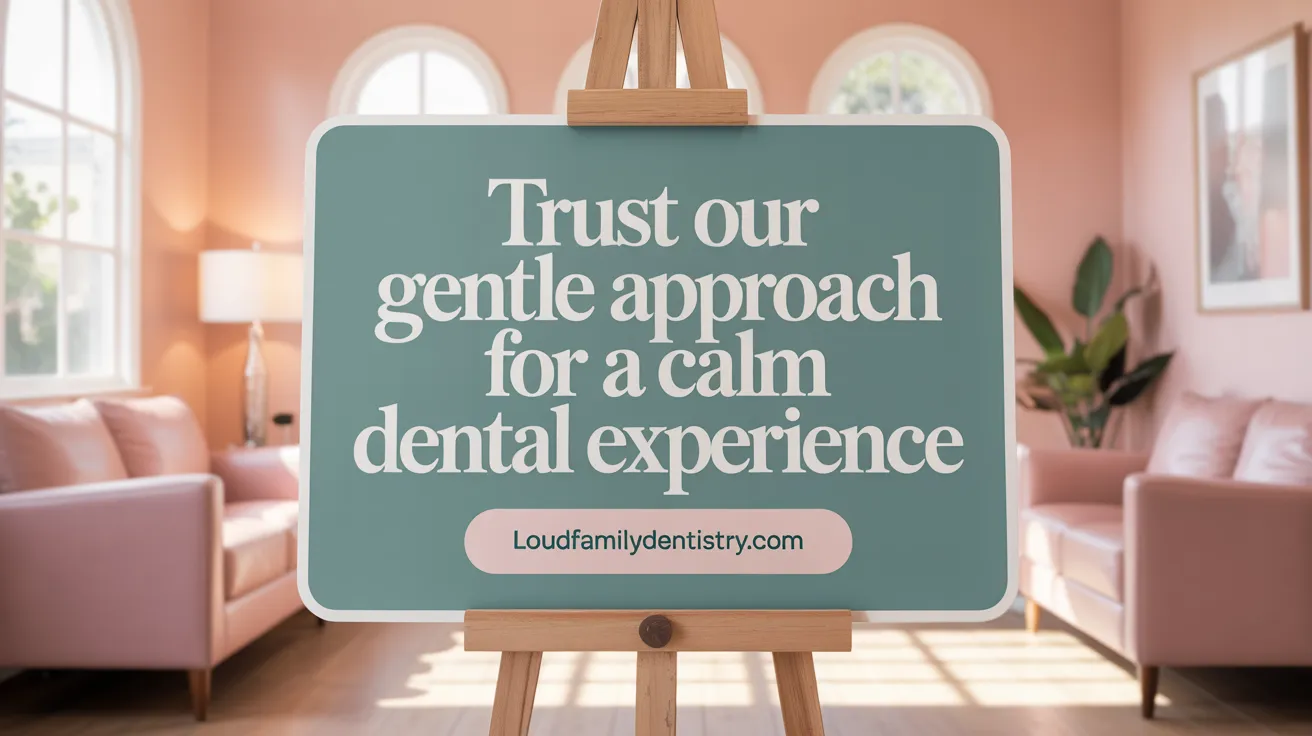Why Comfort Matters in Dental Care
Dental visits can provoke anxiety and fear for many, yet countless patients share stories of comfort and trust that transform their experiences. This article explores authentic patient testimonials revealing how compassionate care, advanced technology, and patient-centered approaches create a calming dental environment where even those with dental phobia feel at ease and confident in their oral health journey.
The Role of Compassion and Professionalism in Patient Comfort

How do patients describe the dental staff and their approach?
Patients consistently describe dental staff as friendly and welcoming, caring, and professional. They often praise the kindness and patience of dentists and hygienists, noting their compassionate approach that eases dental anxiety. For example, Dr. Nawabi and his team receive frequent mentions for gentle, attentive care that helps even those with dental phobia feel at ease. Many patients feel welcomed and supported, which fosters a trusting and comfortable environment.
What impact does staff communication have on patient comfort?
Effective communication is crucial in building patient comfort and trust. Patients value when dental staff provide thorough explanations about treatments and clearly answer questions. This openness reduces uncertainty and fear, helping patients feel informed and relaxed. The practice of regularly checking on patient comfort during procedures further reassures patients, making visits less stressful and more positive.
Patient feelings of comfort and trust
The combination of compassionate care and clear communication establishes strong patient trust. Many testimonials reveal patients who return over years, grateful for a dental team that genuinely cares. Those with dental anxiety report significant improvement in their experience due to the staff's warm and patient-focused approach.
Importance of communication and thorough explanations
Communication enhances every stage of patient care—from initial explanations to post-treatment follow-ups. This comprehensive approach ensures patients feel valued and safe, contributing to an overall positive dental experience and better oral health outcomes.
Advanced Technology and Modern Practices that Ease Dental Visits

Use of Updated and State-of-the-Art Equipment
Modern dental offices invest in the latest technology to improve precision and minimize discomfort. Tools like digital X-rays and laser dentistry allow for less invasive and more accurate procedures, reducing patient anxiety. Computer-controlled anesthetic delivery systems offer gentle pain management by administering anesthetics smoothly and with less discomfort than traditional injections. These advancements contribute to a smoother, more efficient experience.
Pain Management Technologies
Pain-free dental care is a top priority. Besides advanced anesthetic techniques, practices often provide sedation dentistry options such as nitrous oxide and IV sedation, including various sedation dentistry techniques, to help highly anxious patients relax during treatment. Patients report that these technologies greatly ease their fears and ensure procedures are painless. For more on managing dental anxiety, including pharmacological and behavioral approaches, see this comprehensive resource.
Sanitized and Safe Environment Adherence to Protocols
Maintaining cleanliness and safety is essential for patient confidence. Dental offices rigorously follow sanitation procedures, including strict adherence to COVID-19 protocols, to ensure a sterile environment. The clean, welcoming atmosphere helps patients feel secure and cared for, reducing anxiety related to health risks and contributing to a comfortable dental experience.
Efficiency and Precision During Procedures
The integration of modern tools allows dental practitioners to complete treatments more quickly and with better accuracy. This efficiency minimizes patient discomfort and shortens appointment times. Patients appreciate the thoughtful combination of technology and careful technique that makes their visits both effective and comfortable, as described in patient testimonials.
How do modern technologies contribute to patient comfort?
Modern technologies such as digital X-rays, laser dentistry, and computer-controlled anesthetics make dental procedures less invasive, more precise, and often pain-free. Sedation dentistry further helps reduce anxiety, creating a reassuring, comfortable experience.
How do dental practices maintain safety and cleanliness to improve patient confidence?
Strict sanitation protocols, including COVID-19 guidelines compliance, are followed to maintain a safe, clean environment. This attentiveness reassures patients, fostering trust and comfort throughout dental visits, as highlighted in several patient reviews and testimonials.
Creating a Calming Environment: From Waiting Room to Treatment Chair

What environmental factors help reduce patient anxiety?
A welcoming dental office atmosphere significantly eases patient stress. Warm greetings at the front desk create a positive first impression. Comfortable seating, soothing background music, calming lighting, and pleasant décor throughout the waiting and treatment areas help patients feel relaxed and settled. For more on improving patient comfort and creating a calm dental environment, see Improving patient comfort in dental offices and Enhancing the dental patient experience.
Additional amenities such as magazines and refreshments provide distractions and comfort during wait times. Tools like noise-canceling headphones and weighted blankets are increasingly used to further soothe anxious patients during treatments. Learn about these comfort dentistry benefits at Unlocking the Secrets of Comfort Dentistry and Comfort Dentistry Benefits.
How do dental chairs and room set-up contribute to patient comfort?
Comfort enhancements in treatment rooms are crucial for a positive dental experience. Ergonomically designed dental chairs with adjustable positioning, plush cushioning, lumbar support, and features mimicking zero gravity improve circulation and reduce pressure points. These design elements help patients remain comfortable even during longer procedures. For detailed information, check Focus on Patient Comfort and Comfort Dentistry benefits.
The room setup also plays an important role. Rear-mounted delivery systems keep dental instruments hidden from the patient’s view, reducing feelings of anxiety or fear. Warm lighting, relaxing background music, and attractive décor in the treatment space maintain a calm environment, supporting patient relaxation. See more about transforming visits with a comfortable dental experience at Transforming Visits with a Comfortable Dental Experience.
Use of amenities and relaxation techniques
Many dental offices incorporate relaxation techniques such as guided imagery and breathing exercises, which boost comfort during procedures. The availability of weighted blankets, pillows, and noise-reducing headphones brings added physical and sensory comfort, especially for patients with dental phobia or sensory sensitivities. For evidence-based anxiety relief methods, refer to Managing dental anxiety and Relaxation Techniques in Dentistry.
Ergonomic furniture and calm décor
Throughout the office, ergonomic chairs in waiting areas and thoughtfully chosen décor contribute to a serene, stress-free atmosphere. These elements collectively foster trust and encourage patients to feel at ease from arrival to treatment. Enhancing the dental patient experience with personalized care and comfort is discussed at Enhancing the dental patient experience.
| Aspect | Features | Benefits |
|---|---|---|
| Waiting room ambiance | Warm greetings, comfortable seating, calming music, pleasant décor | Reduces anxiety and builds trust (Patient Comfort and Welcoming Atmosphere) |
| Treatment room comfort | Adjustable ergonomic chairs, relaxing lighting, rear-mounted equipment | Minimizes physical discomfort and visibility of instruments (Comfort Dentistry Benefits) |
| Amenities | Magazines, refreshments, noise-canceling headphones, weighted blankets | Enhances distraction, reduces sensory stress (Comfort Amenities in Dental Care) |
| Relaxation techniques | Guided imagery, breathing exercises | Supports mental relaxation during treatment (Relaxation Techniques in Dentistry) |
These thoughtful environmental designs work together to create a calming dental experience that helps patients feel comfortable and cared for throughout their visit. For additional patient perspectives on comfort and care, see Patient Reviews at Lincoln Family Dentist.
Personalized Care and Patient Education: Building Trust and Confidence

How does personalized care impact patient satisfaction?
Patients consistently appreciate when dental teams take the time to listen to their individual concerns and tailor treatment plans accordingly. Empathy and respect for patient privacy create a welcoming atmosphere that helps to build trust. When staff members show genuine care, such as regularly checking for comfort and managing pain effectively, patients feel valued. This patient-specific attention fosters strong relationships that enhance satisfaction, loyalty, and long-term commitment to the practice (Enhancing the dental patient experience, Patient Testimonials).
What role does patient education play in comfort and oral health?
Clear, thorough education about dental procedures and daily oral hygiene empowers patients and eases anxiety. When patients understand what to expect and why treatments are necessary, their comfort levels improve significantly. Education also emphasizes preventive care, encouraging behaviors like proper brushing, flossing, and diet control. Moreover, follow-up support—including care instructions and post-treatment check-ins—reinforces a practice’s dedication and helps patients maintain good oral health, increasing their confidence and motivation to attend regular dental visits (Patient education and communication, Comfortable dental experience.
Why is a patient-centered dental practice important?
A patient-centered approach prioritizes comfort, communication, and individualized care throughout the dental journey. It includes creating a calm environment, providing clear explanations, and respecting patient preferences. This approach supports not only physical comfort but also emotional well-being, which is crucial for patients with dental anxiety. By fostering open dialogue and involving patients in decision-making, it strengthens trust and encourages positive experiences that patients are likely to share and repeat (Implementing a patient-centered dental practice, Managing dental anxiety.
How does post-treatment follow-up enhance patient trust?
Following treatment, personalized follow-ups demonstrate ongoing care and concern beyond the dental chair. This can include calls to check on recovery, answering questions, and encouraging feedback. Such attention reassures patients that their well-being is a priority and that help is available if complications arise. It solidifies a sense of partnership in oral health management and contributes to sustained patient satisfaction and retention (Post-treatment follow-up care, Patient Testimonials.
Addressing Dental Anxiety and Phobia Through Comprehensive Strategies

What strategies effectively manage dental anxiety?
Managing dental anxiety successfully requires a multifaceted approach. Early recognition is achieved through interviews and anxiety questionnaires such as the Modified Dental Anxiety Scale. Psychotherapeutic interventions including cognitive-behavioral therapy (CBT), relaxation methods like diaphragmatic breathing, and guided imagery support patients by restructuring fears and calming nerves. For more severe anxiety, pharmacological options like nitrous oxide sedation or IV sedation provide relief during procedures. Additionally, enhancing the dental office environment with soothing sounds, pleasant aromas, and a welcoming staff reduces stress and creates a calming atmosphere.
How do communication and trust influence anxious patients' experiences?
Open, clear communication plays a vital role in alleviating anxiety. Dental professionals who thoroughly explain treatments, patiently answer questions, and offer continuous reassurance build strong rapport with patients. This trust helps anxious individuals feel safe and respected, easing their fears and improving cooperation during care. Consistent positive interactions foster loyalty and encourage patients to attend regular check-ups, thus improving overall oral health outcomes (Enhancing the dental patient experience).
Long-term management and positive reinforcement
Sustained comfort in dental care is supported by ongoing patient education, gradual exposure to dental procedures, and positive reinforcement after each visit (Effective communication with anxious dental patients. Encouraging relaxation techniques and following up after treatments show patients their well-being is a priority. Combining these comprehensive strategies enables many patients to overcome dental anxiety and maintain lifelong oral health with confidence (Patient Testimonials.
Family-Friendly and Long-Term Patient Relationships Foster Comfort

How do dental practices create comfort for families and children?
Dental offices that serve families focus on creating a welcoming environment tailored for children and those with special needs. Staff treat young patients patiently, using age-appropriate explanations to explain procedures, helping kids feel safe and less anxious. Parents appreciate when the office provides a family-friendly atmosphere with kid-focused communication and gentle care. Practices often accommodate special needs patients by adjusting approaches and ensuring comfort, which establishes trust and reduces dental anxiety early (Managing dental anxiety, sedation dentistry).
What do long-term patients say about their ongoing care?
Long-term patients often share stories of deep trust and loyalty toward their dental care providers. Many travel significant distances to receive care, highlighting satisfaction with consistent, high-quality treatments over the years. These patients mention personalized service and meticulous attention to detail, emphasizing how their comprehensive dental solutions—from cleanings to complex implants—have boosted their confidence and oral health. The steady care fosters lasting relationships that make dental visits more comfortable and reassuring (Long-Term Patient Satisfaction, Patient Testimonials.
Flexible scheduling and urgent care responsiveness
Practices that prioritize patient comfort offer flexible appointment times and prompt responses to urgent dental issues. This adaptability reduces patient stress by accommodating busy schedules and providing timely relief for dental emergencies (Prompt Dental Response, Real Patient Stories).
Positive outcomes and increased confidence
Patients repeatedly report positive treatment results such as improved smiles, relief from pain, and restored oral function. These successes contribute significantly to their self-esteem and willingness to maintain regular dental care (Positive Patient Experiences, Patient Stories.
| Aspect | Description | Patient Impact |
|---|---|---|
| Family-Friendly Care | Patient education, gentle approach for kids and special needs patients (Family-Friendly Dental Care, sedation dentistry | Reduced anxiety, early positive habits (Dental Anxiety Support |
| Long-Term Loyalty | Consistent quality, trust, personalized care, willingness to travel (Long-Term Patient Dental Care) | High satisfaction, sustained oral health (Long-Term Patient Satisfaction, Patient Testimonials |
| Scheduling Flexibility | Appointment convenience, urgent care responsiveness (Efficient Scheduling) | Reduced appointment stress (Prompt Dental Response) |
| Treatment Outcomes | Effective procedures, improved aesthetics and oral health (Dental Implant Success Stories | Boosted confidence, better quality of life (Positive Patient Experiences) |
Transforming Dental Visits Through Comfort and Care
Real patient testimonials vividly illustrate how a combination of compassionate staff, modern technology, personalized care, and anxiety management strategies profoundly enhance comfort in dental care. Creating welcoming environments and nurturing long-term relationships foster trust that encourages patients to maintain their oral health confidently. These narratives underscore a vital truth: when dental care prioritizes patient comfort and empathy, it transforms a traditionally stressful experience into one of reassurance, healing, and positive transformation.
